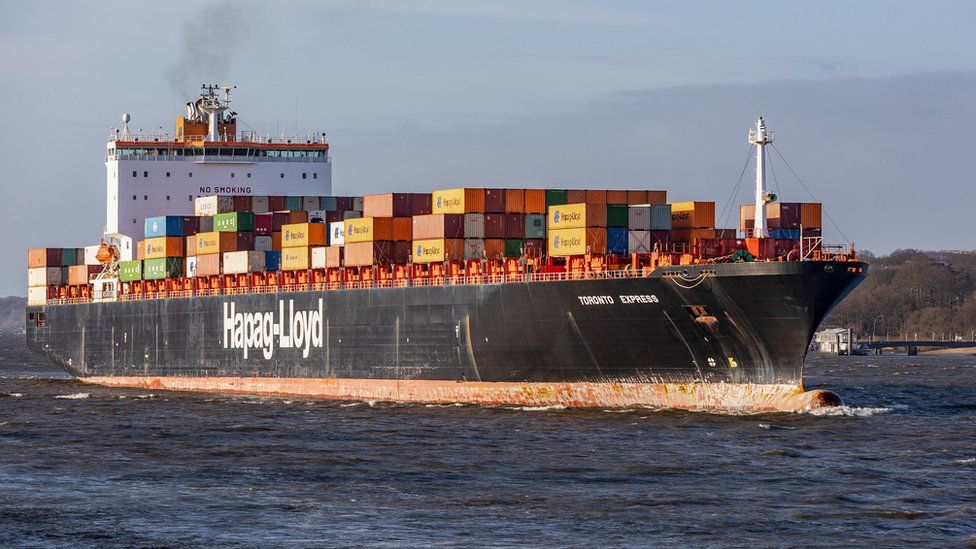
IMAGE SOURCE,GETTY IMAGES
Red Sea Shipping Dangers: Hapag-Lloyd’s Safety Decision
In a significant development for global shipping, Hapag-Lloyd, one of the world’s largest shipping firms, has chosen to refrain from using the Suez Canal for Red Sea shipping, citing safety concerns.
Current Safety Situation
Yemen’s Houthi rebels, supporting Hamas in the Israel-Gaza conflict, have declared their intention to target vessels they believe are en route to Israel. This has led to a series of attacks in the Red Sea, prompting heightened security measures and concerns about the safety of maritime routes.
Hapag-Lloyd’s Decision
Despite international efforts to secure the area, Hapag-Lloyd considers the passage through the Red Sea, including the Suez Canal, as “too dangerous.” Instead, the company has decided to reroute its ships via the Cape of Good Hope, a longer but perceived safer alternative.
Global Shipping Impact
Hapag-Lloyd’s announcement follows a trend of shipping companies reevaluating their routes due to safety issues. The Red Sea, a crucial waterway for consumer goods, oil, and liquefied natural gas shipments, now faces disruptions that could reverberate across global supply chains.
International Response
In response to the heightened risks, more than a dozen countries have joined a US-led coalition named Prosperity Guardian. The coalition aims to protect commercial shipping in the Red Sea, emphasizing the strategic importance of this maritime route.
Potential Consequences
The decision by Hapag-Lloyd raises concerns about the potential consequences for the global economy. The alternative route around the Cape of Good Hope adds substantial mileage to the journey, leading to fears of increased transport costs, delays, and disruptions to the supply of goods.
Industry Reactions
Other major shipping companies, including Danish firm Maersk, have signaled their intention to resume Red Sea operations. The divergence in approaches among industry leaders highlights the complexity of balancing safety concerns with the imperative to maintain crucial shipping routes.
Conclusion
As the situation unfolds, the Red Sea shipping landscape is in flux, with companies navigating safety challenges and seeking viable alternatives. Stay tuned for updates on how this decision by Hapag-Lloyd shapes the future of global maritime trade.
israel accuses south africa of profound distortionat icj genocide hearing